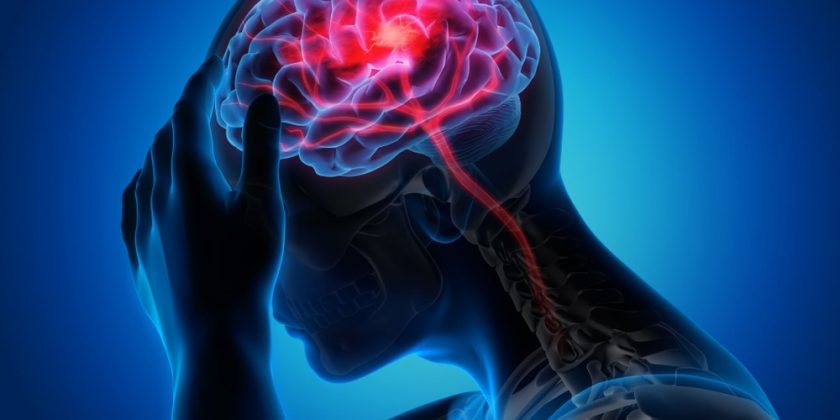In a recent study published in the European Heart Journal, researchers identified brain structures related to cognitive impairment associated with elevated blood pressure (BP).

Background
Elevated BP is associated with dementia and cerebrovascular diseases and is a significant risk factor for mortality. Several studies have suggested that hypertension may be linked to impaired cognitive performance. Moreover, elevated BP causes long-term brain alterations. The associations between cognition and BP may be mediated by changes in the cerebral structures, although the underlying mechanisms remain elusive.
About the study
In the present study, researchers identified brain structures responsible for BP effects on cognitive function. First, they mapped brain regions influenced by BP using Mendelian randomization (MR) analysis. Uncorrelated instrumental variables linked to BP traits were selected from single-nucleotide polymorphisms (SNPs) replicated in prior one/two-stage genome-wide association studies (GWASs).
Estimates of the SNP effects on BP were extracted from the International Consortium for BP (ICBP) and the United Kingdom (UK) Biobank meta-analysis. Summary statistics of brain imaging-derived phenotypes (IDPs) were derived from another GWAS analysis. Instrumental variables from the meta-analysis were used to identify IDPs affected by BP.
A GWAS analysis with 257,841 individuals from the UK Biobank and the cognitive genomics consortium (COGENT) was used as the source of genetic estimates of SNPs’ effects on cognitive function. Uni- and multi-variable MR analyses were performed using the inverse variance-weighted (IVW) method. Uncorrelated SNPs associated with brain IDPs were used to test the effect of IDPs on cognitive function.
In an observational analysis, White British subjects of the UK Biobank study were selected to examine the associations between cognitive function, brain IDPs, and BP. The association between cognitive function and BP traits was assessed using a univariable general linear model (GLM) at the baseline visit in the UK Biobank study. Associations between brain IDPs and BP indices/cognitive function were evaluated using imaging data and multivariate GLMs.
Findings
Omics eBook

The researchers identified 242, 168, and 68 brain IDPs associated with systolic BP (SBP), diastolic BP (DBP), and pulse pressure (PP). SBP was significantly associated with most brain IDPs than other BP indices, with a negative effect on fractional anisotropy-related IDPs and a positive effect on the volume of specific brain regions.
Multivariable MR analysis identified fewer IDPs than univariable analysis and showed that DBP and SBP were associated with 33 and 18 IDPs, respectively. Overall, 335 IDPs associated with BP indices were identified. MR analysis with SNPs from ICBP/UK Biobank meta-analysis revealed a negative effect of PP and SBP on cognitive function using the IVW method.
When the negative effect of SBP was accounted for in the univariable GLM, increased DBP was associated with improved cognitive performance and remained consistent after adjusting for alcohol intake frequency, smoking status, and atrial fibrillation diagnosis. The significant effects of SBP were mainly observed in older individuals (> 50 years), while DBP and SBP had adverse effects on cognitive function in younger people.
The observational analysis confirmed that most IDPs linked to BP were associated with cognitive function. These results were substantially unaffected when adjusted for alcohol intake frequency and smoking status. The effect of these IDPs on cognitive function was estimated by repeating MR analysis. The researchers identified 119, 39, and seven IDPs affected by SBP, PP, and SBP/DBP, respectively, in multivariable MR analysis.
This analysis identified 10 unique IDPs, including SBP-related IDPs, associated with cognitive function. These IDPs were related to the putamen and white matter tracts, including the anterior limb of the internal capsule, anterior thalamic radiation, and anterior corona radiata. Finally, the team validated these findings in a prospective cohort of 116 normotensive and hypertensive subjects, illustrating the translational potential of the results into clinically relevant subjects.
Conclusions
Taken together, the researchers observed the effect(s) of BP on cognitive function and identified specific brain structures that respond to SBP differences. They did not find evidence of a genetic association between the volume of white matter hyperintensities with cognitive function. Notably, validation in the prospective cohort revealed similar SBP effects on IDPs in individuals with no evident radiological damage, suggesting they might serve as prodromic indicators of cerebral damage due to elevated BP.
- Siedlinski, M. et al. (2023) "Genetic analyses identify brain structures related to cognitive impairment associated with elevated blood pressure", European Heart Journal. doi: 10.1093/eurheartj/ehad101. https://academic.oup.com/eurheartj/advance-article/doi/10.1093/eurheartj/ehad101/7081391?searchresult=1&login=false
Posted in: Medical Science News | Medical Research News | Disease/Infection News
Tags: Alcohol, Atrial Fibrillation, Blood, Blood Pressure, Brain, Cognitive Function, Dementia, Frequency, Genetic, Genome, Genomics, Heart, Imaging, Mortality, Nucleotide, Putamen, Smoking, UK Biobank

Written by
Tarun Sai Lomte
Tarun is a writer based in Hyderabad, India. He has a Master’s degree in Biotechnology from the University of Hyderabad and is enthusiastic about scientific research. He enjoys reading research papers and literature reviews and is passionate about writing.
Source: Read Full Article
